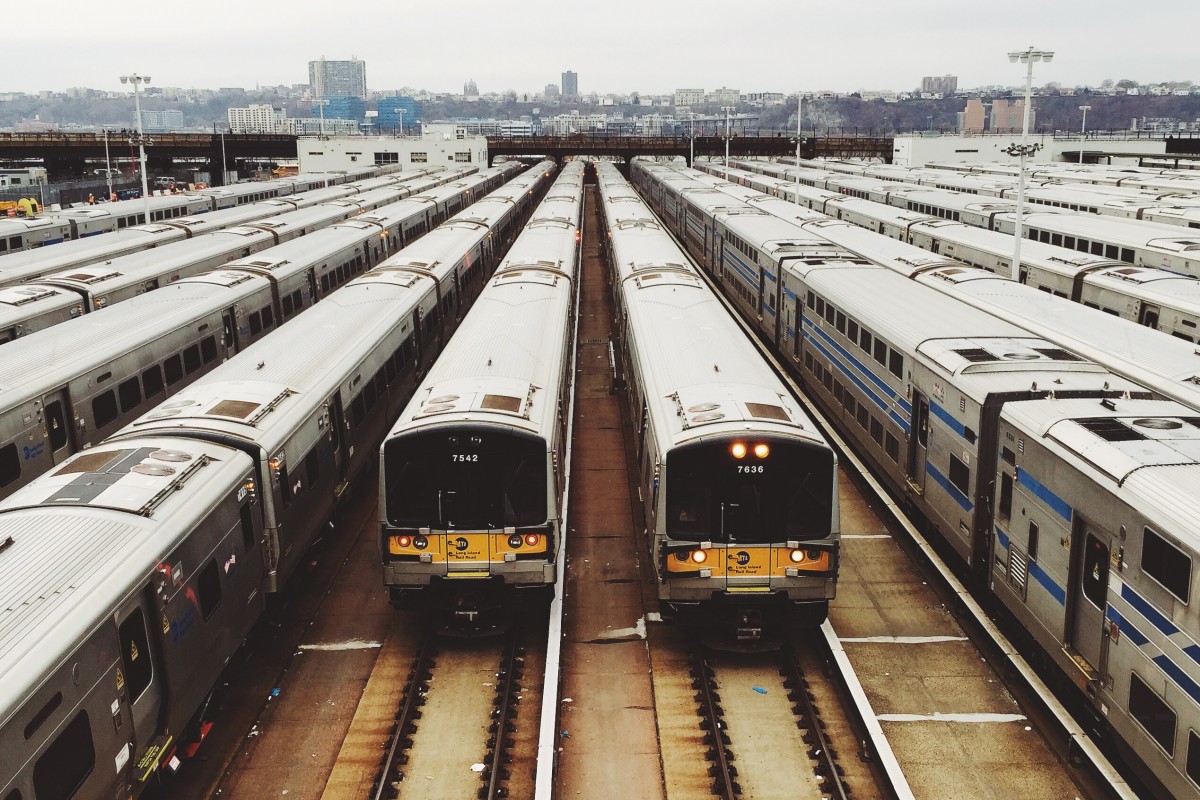Embarking on a road trip is an exciting adventure, but managing expenses effectively is crucial for a smooth and enjoyable journey. This guide provides a detailed roadmap for tracking your spending, from initial planning to post-trip analysis. Learn how to budget effectively, utilize mobile apps, categorize expenses, and ultimately control costs, ensuring your next road trip is not only memorable but also financially savvy.
This comprehensive guide covers everything from creating a pre-trip budget to analyzing post-trip data, equipping you with the tools and strategies to optimize your spending on your next road adventure. We’ll delve into practical methods, including detailed templates, examples, and actionable tips for maximizing your travel budget while minimizing unexpected costs.
Planning for Road Trips
Road trips offer a unique opportunity for exploration and adventure, but careful planning is essential for a smooth and enjoyable experience. This section details the crucial steps in creating a comprehensive budget and managing expenses during your journey. Proper planning allows you to allocate resources effectively, anticipate potential challenges, and ultimately savor the trip to the fullest.
Preliminary Budget Creation
Developing a preliminary budget is paramount for a successful road trip. This involves meticulously considering both fixed and variable costs associated with the journey. Fixed costs, such as vehicle maintenance or insurance, remain relatively constant, while variable costs, including gas, food, and lodging, fluctuate depending on factors like location and choices. A comprehensive budget ensures you can cover all expenses without running into financial difficulties.
Estimating Expenses
Accurately estimating expenses is crucial for creating a realistic budget. One effective method is to analyze past road trips or similar experiences. Review your previous travel logs, receipts, and expense tracking applications to identify typical spending patterns. If you have no previous data, consider researching average costs in the regions you plan to visit. For instance, if you’re planning a trip to a known tourist destination, online resources and travel forums can provide valuable insights into the typical cost of accommodation, food, and activities.
Consider using this data as a benchmark to adjust your budget based on your specific needs and preferences.
Daily Spending Tracking Template
Tracking daily spending allows you to maintain control over your finances and identify potential overspending. A well-structured template can greatly assist in this process. A sample template might include columns for date, lodging, food, activities, gas, and miscellaneous expenses. Detailed records help you stay on track and make necessary adjustments throughout the trip.
| Date | Lodging | Food | Activities | Gas | Miscellaneous |
|---|---|---|---|---|---|
| July 12 | $100 | $50 | $25 | $35 | $15 |
| July 13 | $80 | $60 | $30 | $40 | $10 |
| July 14 | $90 | $70 | $40 | $30 | $20 |
Accounting for Unexpected Expenses
Unexpected expenses are an inherent part of any road trip. These could include vehicle repairs, medical emergencies, or unforeseen attractions. To mitigate the impact of such expenses, include a contingency fund in your budget. Allocate a specific amount for potential surprises during the trip. For example, setting aside 10-15% of your total estimated budget can act as a buffer for unexpected costs.
This buffer ensures you can comfortably handle unforeseen circumstances without jeopardizing your entire trip.
Tracking Spending in Real-Time

Staying on top of your road trip expenses is crucial for a smooth and enjoyable journey. Real-time tracking allows you to monitor spending, adjust budgets as needed, and avoid unexpected financial surprises. This proactive approach helps you maintain control and make informed decisions about your travel plan.Effective real-time expense tracking simplifies budgeting and empowers you to manage your finances efficiently during your trip.
It allows for immediate adjustments to your spending patterns and helps prevent overspending, enabling a more relaxed and stress-free experience.
Mobile Applications for Expense Tracking
Various mobile applications offer convenient and efficient ways to track your spending on the go. These apps provide features for categorizing expenses, generating reports, and synchronizing data across devices. They are designed for ease of use and accessibility, enabling you to maintain a comprehensive record of your travel expenses.
- TripIt Expense: This application integrates seamlessly with TripIt, a popular travel planning tool. Users can easily input expenses related to flights, accommodations, and other travel-related costs. This tool offers robust reporting capabilities, enabling users to monitor their expenses across different categories, such as accommodation, food, transportation, and activities.
- Mint: Mint is a comprehensive personal finance management tool. It provides a centralized platform for tracking income and expenses, including those incurred during road trips. Users can link their bank accounts and credit cards to automatically categorize transactions. Mint’s reporting tools enable users to identify spending patterns and adjust their budgets accordingly.
- Expensify: Expensify is a business expense tracking app commonly used for corporate travel. However, its functionality extends to personal use. It enables users to submit receipts and track expenses, and automatically categorize them. This feature helps streamline the expense tracking process and reduces the need for manual entry.
- PocketGuard: This app focuses on budgeting and expense tracking. It provides users with customizable budgets and allows for automatic categorization of transactions. PocketGuard is known for its user-friendly interface and its ability to provide personalized insights into spending habits.
Setting Up Automatic Expense Tracking
Automating expense tracking can save time and effort. Many applications allow you to link bank accounts or credit cards to automatically categorize transactions. This streamlined approach ensures accuracy and reduces the risk of errors.
- Automated Categorization: Most apps offer automated categorization based on transaction details. This feature simplifies the process by classifying expenses into predefined categories, like accommodation, food, or activities. Users can further customize these categories to align with their specific needs.
- Integration with Financial Accounts: Linking bank accounts or credit cards allows for automatic import of transactions. This feature eliminates manual entry, ensuring all expenses are captured and tracked accurately. This integration is essential for real-time monitoring of spending patterns.
- Customizable Budgets: Many applications provide the ability to create customized budgets for different categories. This helps in effectively managing spending and ensures that expenses align with predefined limits.
Comparing Expense Tracking Methods
Various methods exist for tracking expenses, each with its own advantages and disadvantages. Careful consideration of these factors will help you choose the most suitable approach for your needs.
- Manual Tracking: This involves manually recording expenses in a notebook or spreadsheet. It provides complete control over data entry, but it can be time-consuming and prone to errors. It is less efficient than automated systems.
- Automated Tracking: Using mobile applications for automatic expense tracking offers significant advantages in terms of speed, accuracy, and ease of use. It eliminates manual entry, reducing errors and saving time.
Importance of Regular Review
Regularly reviewing your spending records is essential for staying within budget and identifying potential issues. This practice allows for adjustments to your spending patterns and prevents overspending. It is crucial for maintaining control over finances and ensuring a positive travel experience.
Comparison of Travel Expense Apps
| App Name | Features | Pros | Cons |
|---|---|---|---|
| TripIt Expense | Seamless integration with TripIt, robust reporting | Easy expense input, comprehensive reports | Limited functionality outside of travel |
| Mint | Comprehensive personal finance management, automatic categorization | Centralized platform, insightful spending analysis | May not be ideal for solely travel expenses |
| Expensify | Receipt submission, automatic categorization, robust reporting | Streamlined process, accuracy | Steeper learning curve, potentially higher cost |
| PocketGuard | Budgeting tools, automatic categorization, personalized insights | User-friendly, customizable budgets | May lack the reporting depth of other apps |
Categorizing and Analyzing Expenses

Accurately tracking your road trip spending is only half the battle. Effective analysis requires careful categorization of expenses to gain valuable insights. This process helps you understand where your money goes and identify potential areas for cost savings. By meticulously recording and classifying your expenditures, you can build a comprehensive picture of your road trip finances.
Different Categories of Road Trip Expenses
Road trip expenses fall into several key categories. Understanding these categories allows for a more comprehensive and accurate financial picture. This understanding helps in identifying trends and potential cost-saving measures. By categorizing expenses, you can see where your money is being spent most, allowing for adjustments and planning for future trips.
Importance of Accurate Categorization
Accurate categorization of expenses is crucial for meaningful analysis. Inaccurate categorization obscures the true picture of spending patterns. This can hinder your ability to identify cost-saving opportunities and to plan effectively for future trips. Consistent and precise categorization is essential to recognize spending trends, identify potential cost reductions, and effectively plan future road trips.
Road Trip Expense Categorization Table
This table provides a framework for classifying common road trip expenses. This framework helps you understand the different types of costs associated with a road trip and their frequency. By examining the average cost of each category, you can identify patterns and areas for potential savings.
| Expense Type | Category | Frequency | Average Cost |
|---|---|---|---|
| Hotel Stay | Accommodation | 1-3 per trip | $100-$300+ |
| Restaurant Meals | Food | Multiple per day | $20-$50+ |
| National Park Entrance Fees | Activities | 1-2 per trip | $20-$50+ |
| Gas | Transportation | Multiple per trip | $30-$100+ |
| T-shirts, Magnets | Souvenirs | Variable | $10-$50+ |
Analyzing Spending Trends
To identify areas for cost reduction, examine spending trends across different categories. For instance, if you consistently spend more on food than anticipated, consider meal prepping or packing snacks for certain parts of the trip. Analyzing your spending habits across various road trips provides valuable insights.
Identifying Patterns in Spending Habits
Analyzing spending habits on different types of road trips provides a deeper understanding of your spending patterns. A cross-comparison of spending across trips with varying durations or destinations reveals significant insights. This analysis helps to refine budgeting strategies for future trips, allowing for more effective cost management and enjoyable experiences. By understanding these patterns, you can develop a personalized approach to budgeting for future trips.
Managing and Controlling Costs
Careful planning and strategic choices are crucial for keeping road trip expenses within budget. By understanding cost-saving strategies and maximizing value, travelers can enjoy their journeys without undue financial strain. This section will provide practical tips for securing discounts, minimizing food costs, finding affordable accommodations, and optimizing fuel efficiency.A well-structured approach to managing expenses during road trips not only reduces financial stress but also enhances the overall travel experience.
It allows for more flexibility in exploring destinations and indulging in unplanned activities along the route. This proactive management frees up funds for unexpected adventures or higher-quality experiences.
Maximizing Discounts and Deals
Travelers can significantly reduce expenses by actively seeking out discounts and deals. Leveraging various resources, including online platforms and local publications, can lead to substantial savings. Utilizing travel rewards programs, loyalty cards, and coupons for gas, hotels, and restaurants is highly recommended.
- Online Travel Agencies (OTAs): Regularly checking deals and promotions on OTAs for hotels, rental cars, and activities is essential. Many OTAs offer price comparisons and special deals that can save considerable money.
- Travel Coupon Websites: Dedicated websites compiling coupons and deals for various travel services can be very helpful. These sites frequently feature discounted rates on attractions, tours, and dining.
- Loyalty Programs: Utilizing rewards programs associated with hotels, gas stations, and restaurants can provide significant savings over time. Collecting points and redeeming them for discounts on future purchases is an effective strategy.
Minimizing Food Expenses
Food costs can easily accumulate during road trips. Planning and implementing strategies to minimize food expenses is vital for maintaining a tight budget. Preparing some meals beforehand and utilizing local grocery stores or farmers’ markets for fresh produce can lead to considerable savings.
- Pack Snacks and Meals: Packing snacks and some meals beforehand helps to avoid impulse purchases at high-priced roadside restaurants. This approach reduces unnecessary expenses and allows for greater control over food choices.
- Utilize Local Grocery Stores: Taking advantage of local grocery stores, rather than fast-food chains or convenience stores, often provides significantly lower prices on food and beverages.
- Farmers’ Markets: Exploring local farmers’ markets for fresh produce and other ingredients can lead to considerable savings and a more authentic experience.
Finding Budget-Friendly Lodging
Finding affordable lodging options is crucial for maximizing travel budget. Exploring alternative accommodations, such as hostels, motels, or vacation rentals, can dramatically reduce expenses. Utilizing online platforms and local resources is often effective.
- Hostels: Hostels provide affordable accommodation with shared facilities, offering a budget-friendly option for travelers on a tight budget.
- Motels: Motels offer a convenient and cost-effective alternative to hotels, often providing basic amenities at lower prices.
- Vacation Rentals: Consider renting a cabin or a house for a more immersive and cost-effective experience, especially for larger groups.
Utilizing Coupons, Loyalty Programs, and Other Resources
Utilizing coupons, loyalty programs, and other resources is a proven method for saving money on various travel expenses. Combining these resources with careful planning can create significant cost savings.
- Coupons: Collect coupons for restaurants, gas stations, and other businesses. These can offer substantial savings, particularly when combined with other strategies.
- Loyalty Programs: Leveraging loyalty programs can earn points and rewards, redeemable for discounts on future purchases.
- Travel Websites: Numerous websites offer discounts on various travel-related services. Researching and using these resources can be very effective.
Maximizing Gas Mileage on Long Drives
Optimizing gas mileage is essential for minimizing fuel costs on long road trips. Proper maintenance, driving techniques, and tire pressure management can yield significant savings.
- Tire Pressure: Maintaining proper tire pressure can significantly improve gas mileage. Underinflated tires reduce fuel efficiency.
- Driving Style: Avoiding aggressive acceleration and braking, maintaining a consistent speed, and avoiding unnecessary idling can improve fuel economy.
- Vehicle Maintenance: Regular vehicle maintenance, including oil changes and filter replacements, ensures optimal fuel efficiency.
Post-Trip Review and Refinement

Returning from a road trip provides a valuable opportunity to analyze your spending habits and refine your future travel plans. Thorough review of expenses allows for identifying areas where costs can be better managed, leading to more efficient and enjoyable future journeys. This meticulous analysis helps you understand your spending patterns and tailor your budgeting strategies for future road trips.
Analyzing the Entire Trip’s Expenses
A systematic approach to analyzing post-trip expenses is crucial for identifying areas of improvement. First, consolidate all receipts, credit card statements, and travel documentation into a central repository. This organized collection forms the foundation for accurate expense tracking. Next, categorize each expense based on predefined categories (e.g., accommodation, food, gas, activities). This structured categorization allows for a clear overview of spending across different areas.
Finally, use spreadsheet software or dedicated budgeting tools to create a comprehensive expense report. This allows for easy identification of trends and potential areas of overspending.
Creating a Template for Documenting Lessons Learned
A structured template for documenting lessons learned aids in the process of refining future travel plans. This template serves as a record of insights gained from the trip, helping you avoid repeating past mistakes and maximizing future budgets. The template should include sections for:
- Trip Overview: Provide a brief summary of the trip, including dates, destinations, and the number of travelers. This contextual information enhances the insights gathered during the trip.
- Expense Analysis: Highlight key observations about spending habits. Note unexpected expenses, and areas where you exceeded or fell short of anticipated costs. This section serves as a record of past spending behavior.
- Budgeting Adjustments: Detail specific adjustments made to the budget based on the post-trip analysis. Provide justification for the changes, and Artikel the rationale for each adjustment.
- Travel Plan Refinements: Describe adjustments to the travel plan. This could involve changing routes, accommodations, or activities. Note the impact of these changes on the overall budget.
- Lessons Learned: Summarize key learnings from the trip. Focus on aspects that could be improved in future trips. For example, were there any unnecessary expenses, or could the route have been planned more efficiently?
Identifying Areas Where Spending Could Have Been Better Managed
A critical aspect of post-trip review is identifying potential areas for cost savings. This involves a careful examination of spending patterns and identifying trends. For example, if you consistently overspent on meals, consider alternatives like packing lunches or opting for more budget-friendly dining options. Examine accommodations and transportation costs. Could these areas have been better managed through advance booking or alternative options?
Adjusting Future Budgets Based on the Data Collected
Adjusting future budgets is a direct consequence of the post-trip analysis. Utilize the data collected to refine your budgeting methods. If you consistently overspent on gas, adjust the gas budget in future plans. Similarly, if you found that certain activities were significantly more expensive than anticipated, adjust your budget allocation accordingly. Consider using a percentage-based allocation system for different categories, allowing for flexibility and adjusting to new data.
Refining Travel Plans and Budgeting Methods for Future Road Trips
Post-trip data enables the refinement of future travel plans. For example, if you found that a particular route was significantly more expensive than anticipated, consider alternative routes in future plans. Also, if accommodation costs were higher than anticipated, explore alternative lodging options or consider booking in advance. Furthermore, analyze if your budgeting method for certain expenses was inadequate.
If you used a fixed budget and found it insufficient, consider alternative approaches like percentage-based allocations. This approach will help to better manage and control costs in future trips.
Illustrative Examples
Road trip budgeting and expense tracking can seem daunting, but with careful planning and the right tools, it becomes manageable. This section provides concrete examples to illustrate various aspects of tracking your spending on the road.Understanding the intricacies of road trip expenses and how to effectively manage them is crucial for a successful and enjoyable journey. The examples below demonstrate practical applications of budgeting, tracking, and analysis techniques.
Hypothetical Road Trip Budget
A hypothetical two-week road trip across the American Southwest, encompassing national parks and city visits, will illustrate a comprehensive budget. This budget assumes a moderate travel style, including lodging, food, gas, and activities.
- Accommodation (Estimated): $1,000 (mix of campsites and budget hotels)
- Food (Estimated): $1,200 (combination of restaurant meals and grocery shopping)
- Gas (Estimated): $800 (based on estimated mileage and fuel prices)
- Activities & Entrance Fees (Estimated): $500 (park entrance fees, tours, and souvenirs)
- Miscellaneous (Contingency): $300 (unexpected expenses like car repairs, or additional meals)
This detailed breakdown provides a clear picture of the anticipated expenses.
Spreadsheet Tracking Example
A spreadsheet is an excellent tool for organizing and analyzing road trip expenses. The following demonstrates a simple example using Google Sheets or Microsoft Excel.
| Date | Description | Category | Amount |
|---|---|---|---|
| 2024-07-15 | Gas Purchase | Gas | $50 |
| 2024-07-15 | Hotel Stay | Accommodation | $100 |
| 2024-07-16 | Restaurant Meal | Food | $35 |
Formula: To calculate the total expenses for a particular category, use a SUM function, such as `=SUM(C2:C10)` (assuming your expenses start from row 2 and end in row 10 in column C).
This spreadsheet structure allows for easy categorization, which is essential for identifying trends and controlling costs. The formula ensures that total expenses for each category can be quickly calculated.
Successful Expense Management Case Study
A successful expense management case involved a family road trip across the country. They meticulously tracked expenses using a shared spreadsheet, ensuring all members had access to the real-time data.
- Communication: Frequent updates kept everyone informed and prevented misunderstandings about spending.
- Flexibility: The budget allowed for adjustments as needed, maintaining a positive experience despite unexpected events.
- Prioritization: They prioritized essential expenses, allocating a portion of the budget for unexpected costs.
This case study highlights the importance of clear communication, flexibility, and prioritization when managing expenses during a long-distance trip.
Breakdown of Gas Costs
Gas costs vary significantly based on driving style and vehicle type. A fuel-efficient vehicle will consume less gas compared to a larger SUV or truck.
- Driving Style: Aggressive driving and frequent acceleration will increase fuel consumption.
- Vehicle Type: Larger vehicles generally require more fuel than smaller cars.
- Route: Highway driving is typically more fuel-efficient than city driving, and factors like terrain can also impact fuel consumption.
Expense Distribution Example
This table showcases the distribution of expenses across various categories during a typical road trip.
| Category | Amount Spent | Percentage | Notes |
|---|---|---|---|
| Accommodation | $800 | 25% | Combination of hotels and campgrounds |
| Food | $1000 | 30% | Mix of restaurants and grocery shopping |
| Gas | $600 | 18% | Average fuel consumption |
| Activities | $600 | 18% | Entrance fees and tours |
| Miscellaneous | $400 | 12% | Unexpected expenses |
This table visually demonstrates the proportion of spending in each category. Note that the percentages add up to 100%.
Conclusion

In conclusion, effectively tracking your spending on a road trip empowers you to enjoy the journey without financial stress. By meticulously planning, tracking, analyzing, and managing your expenses, you can maximize your travel experience while minimizing costs. This comprehensive guide provides the essential tools and insights to make your next road trip a financially successful and memorable one.